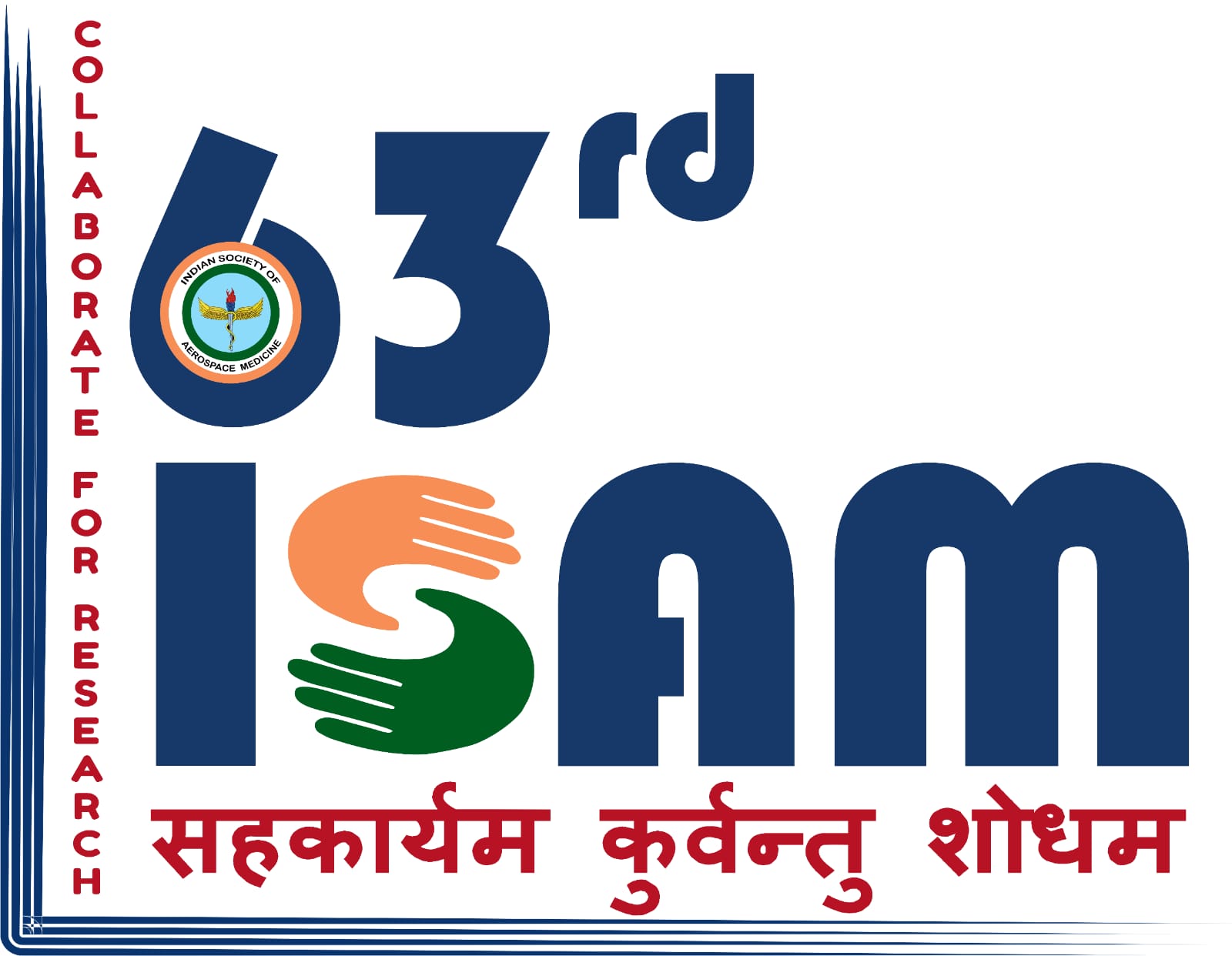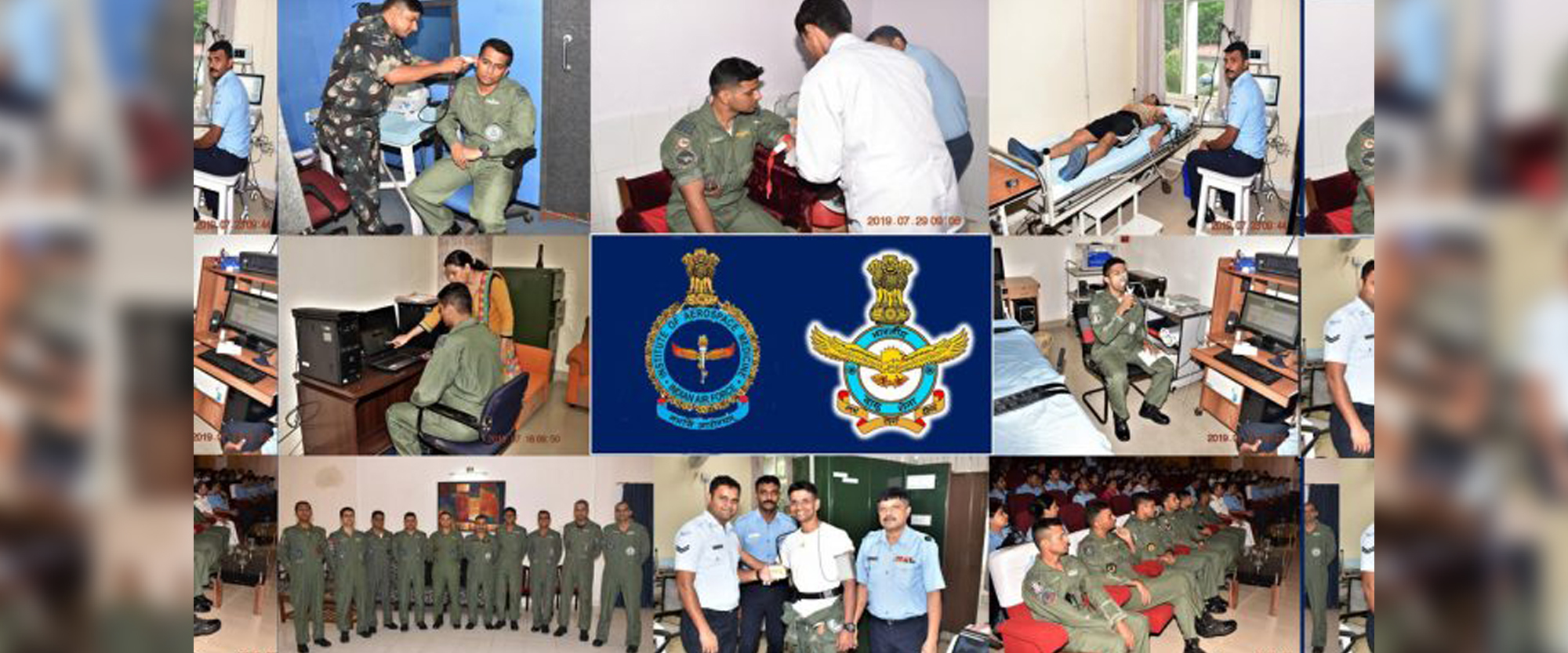IAM
AQARS
Introduction
Institute of Aerospace Medicine (IAM) is a premiere Institute of the IAF and can boast of a glorious past, a very promising future and is at present the hub of aerospace medicine activities in the country. It's origin dates back to 29 May 1957, when the School of Aviation Medicine was started with Wg Cdr R Arunachalam as the first Commanding Officer. The school was established with the aim of
Imparting training in Aviation Medicine to medical officers of the Armed Forces
Indoctrination of aircrew Aviation Medicine. Carrying out research on aeromedical problems and
To assist HAL in the aeromedical aspects of design and development of aircrafts.
The Institute, as it stands today, has been built upon the hard and tireless work put in by the officers of the unit in the past decade. It is the nodal agency providing human engineering and human factors support in the design, development and evaluation of indigenous aircraft development. It is also widely recognized for the high quality of training imparted at the Institute and the cutting edge research being carried out by researchers at the unit.
History
On 19 July 1957, No. 1 Aero Medical Unit was moved to Air Force School of Aviation Medicine at Bangalore and its Mobile Decompression Chamber was utilized for training, research and evaluation activities at the school In 1968, the School was re-designated as Institute of Aviation Medicine because of its widened role and contribution. The crest of the Institute depicts a torch of knowledge with the IAF wing and a snake entwined on the torch handle. The motto, Nabhase Arogyam means freedom from disease in the sky. Advanced aeromedical equipment and simulators were developed / procured to keep pace with the modern developments in the field of Aerospace Medicine. The first of which was the Explosive Decompression Chamber (EDC) which was installed in 1963, followed by Human Centrifuge and Hyperbaric chamber in 1966-67. Simulators like hot cockpit, dry floation tank, and universal cockpit were subsequently indigeniously designed.
In 1982, IAM took a giant leap towards the medical support of manned space flight. This task named "Project Pawan", involved comprehensive medical evaluation selection and training of potential cosmonauts. The Institute was also integra involved in designing physiological experiments that were conducted in space wh Sqn Ldr Rakesh Sharma became the first Indian cosmonaut. In 1985, med evaluation of payload specialists for the proposed Indo Ameri American Space program was also entrusted to the Institute. The quality and standard of work have been recognized by the USSR and USA and both the countries accepted JAM authorized center for carrying out medical evaluation and selection of candidates for space flights. IAM was accepted in 1986 as a center for joint research studies with the Soviet Union as pat of international co-operation. In view of the forays of the Institute in the realm of Space, it was rechristened as the Institute of Aerospace Medicine in 1989. In 1997, the Institute was affiliated to Rajiv Gandhi University of Health Sciences, Bangalore. In recognition of the various achievements, the Presidential Colour was awarded to this prestigious Institute on 21 Nov 2005. The Institute has the distinctive honour of being the first independent medical unit of the Armed Forces to be awarded the Presidential Colour
PRINCIPAL & COMMANDANT
 VV Joshi VSM.jpg)
Air Cmde (Dr) Vijay V Joshi, VSM
DEAN & CHIEF INSTRUCTOR
Gp Capt (Dr) Rahul Pipraiya
email-dean.avmed@gmail.com / deanci.avmed@iaf.gov.inPh - 080 - 25224030
Fax -080 - 25224659
IAM at Present
The work ethos of the personnel of this Institute exemplify the inscription on the statue of Francis Trudeau "To cure sometimes, to relieve often, to comfort always The Institute's role at present revolves around three broad areas
Training
Medical Evaluation of Aircrew
Aeromedical Research & Development Training
The Institute can boast of dedicated and qualified faculty that is involved in high quality education in aerospace medicine to aircrew, medical officers and paramedical personnel. Eighty eight scheduled courses are conducted at the Institute in which about 600 personnel are trained annually. Training is also offered to personnel from friendly foreign countries. The Institute is affiliated to the Rajiv Gandhi University for Health Sciences, Bangalore for the three year residency program in Aerospace Medicine. with the indigenous development of the NVG laboratory. Highly realistic NVG training is being imparted to aircrew. In addition, acquisition of a full motion SD simulator has resulted in more realistic training of our aircrew. The ultra modern state of the art High Performance Human Centrifuge has recently been installed at IAM for training of IAF fighter aircrew. The introduction of the Operational Training in Aerospace Medicine(OPTRAM) courses has revitalized and optimized aircrew training in a more realistic and meaningful manner.
Medical Evaluation
Medical evaluation of military and civil aircrew is one of the major roles of this Institute. Evaluation of aircrew for certain disabilities like barotrauma, musculoskeletal injuries, head injury, and post retention evaluation is vested entirely with IAM due to the availability of specialized departments and simulators. The Institute has carved a niche for itself as a highly professional and efficient aeromedical evaluation center. This is largely due to the application of evidence- based aeromedical decision-making paradigms in the assessment of aircrew.
Aeromedical Research And Development
Aeromedical research has been one of the core areas of expertise of this Institute. Aeromedical research is directed primarily at providing solutions to operational problems. The high quality of research has been recognized both nationally and internationally. Right from the early days, the Institute has also provided comprehensive human engineering and human factors support to the aviation industry in the design, development and evaluation of indigenous aircraft development. This is unique because such expertise in our country exists only at this Institute.
The Future
The Institute is on the threshold of major modernization plans. The indigenously developed NVG training facility at the Institute has been upgraded and plans are on to add more features to the laboratory. The SD simulator has been upgraded to NVG capability and is being utilized to its full potential as a versatile motion based platform, so that aircrew can benefit from training. The new HPHC is being exploited to its maximum for centrifuge training of aircrew of fighter aircrafts. The new Hyperbaric and Decompression chamber has been installed and ready to start functioning. This will ensure that the Institute keeps pace with the best in the world. Beyond these, the Institute has ambitious plans for major research in space medicine. Collaboration with ISRO on joint research activities besides setting up a sophisticated space laboratory at the Institute will cater for cutting edge space medicine research in the future.
Conclusion
The thrust of aeromedical activities in the Institute has all along been towards ensuring that the IAF continues to achieve its motto, Nabha Sparsham Deeptam. Improving human performance and promoting flight safety has been at the core of research activities at the Institute. Activities of I have always kept pace with the growth and developments in the fields of aviation and space medicine. The Institute is ready to face the challenges confronting the present day aviator. The personnel of IAM have strived and always lived up to their motto of "Nabhase Arogyam" i.e., ensuring freedom from disease in the sky.


